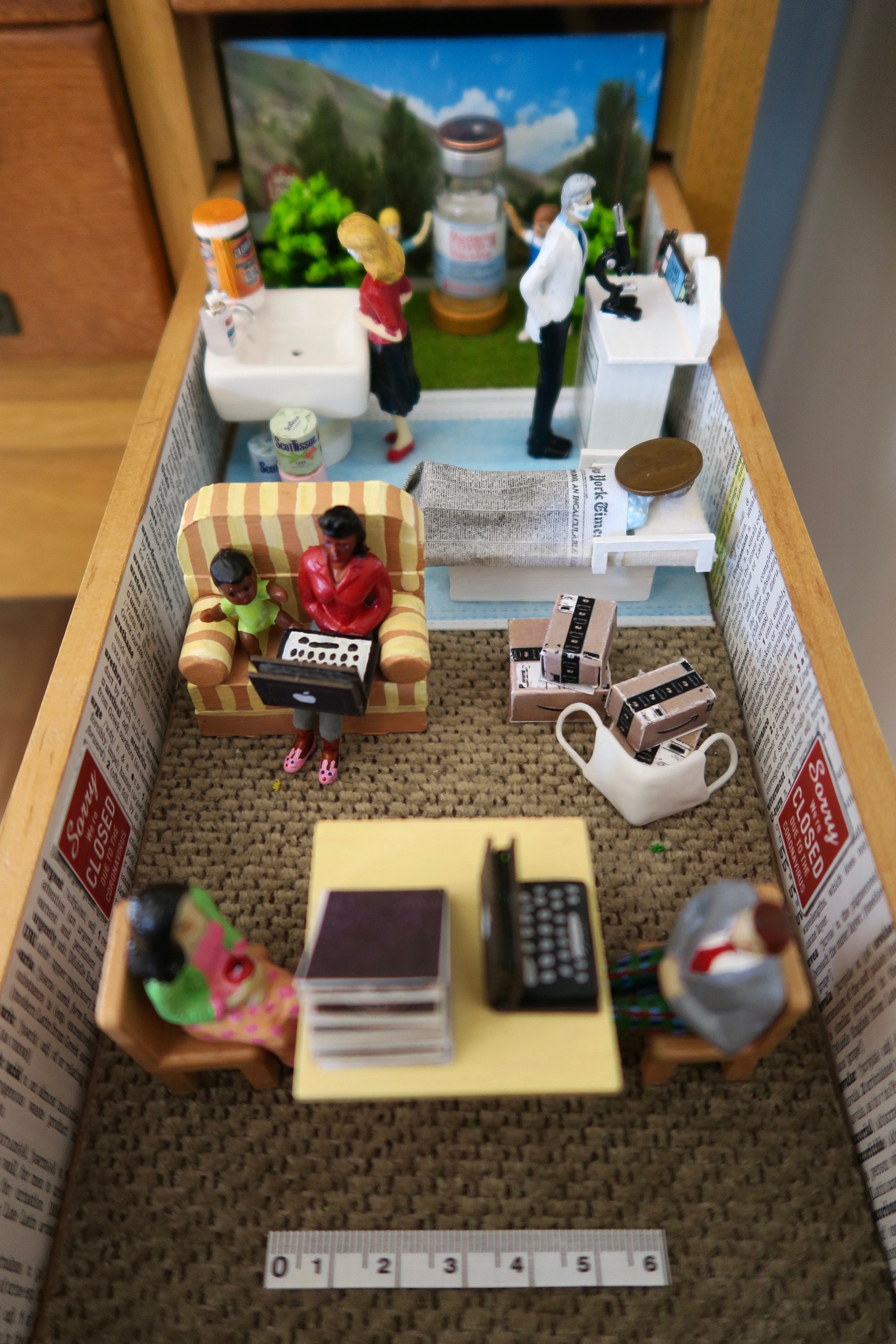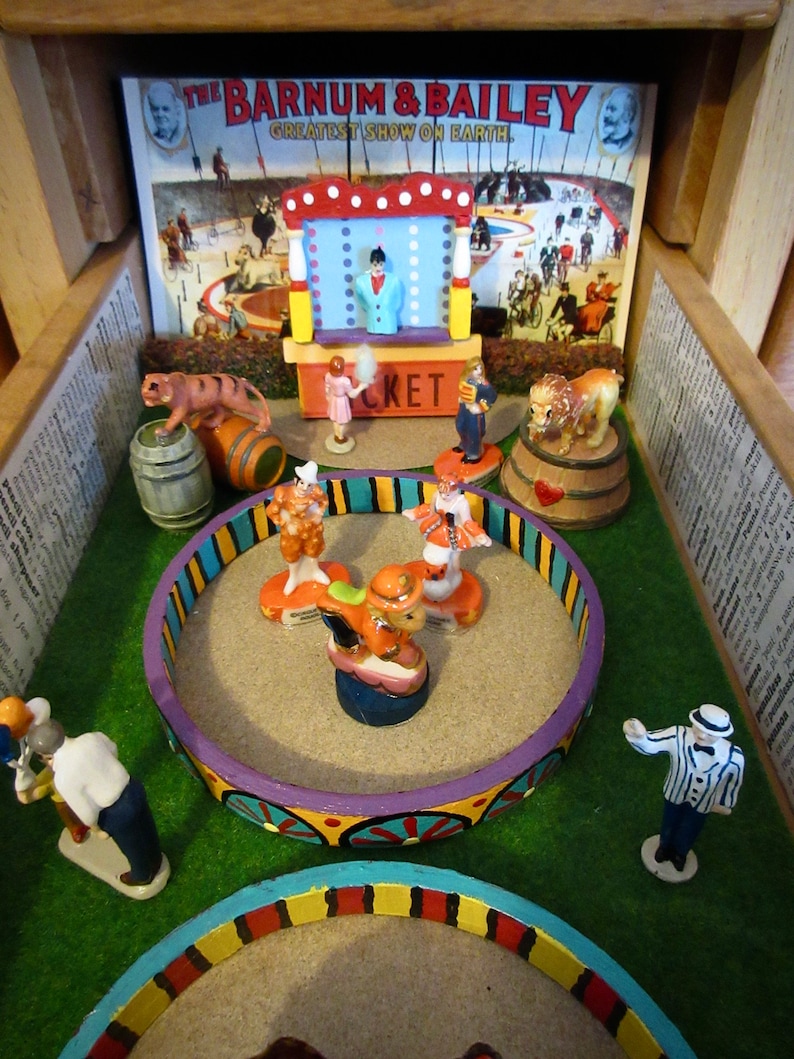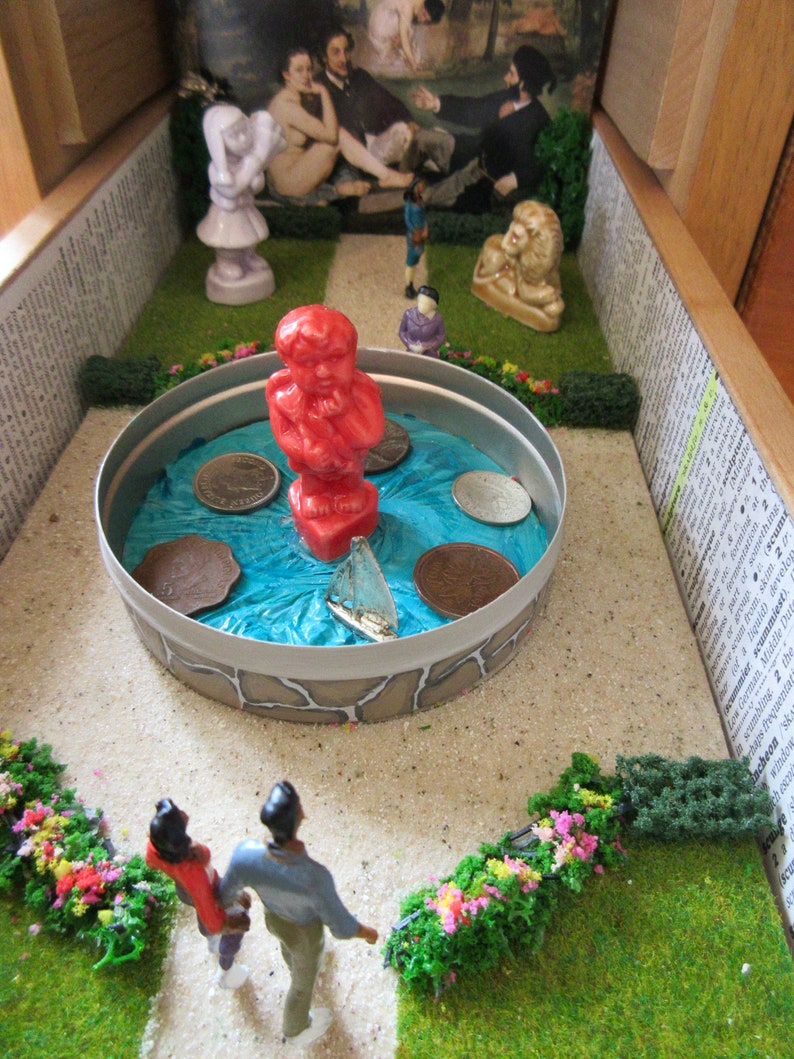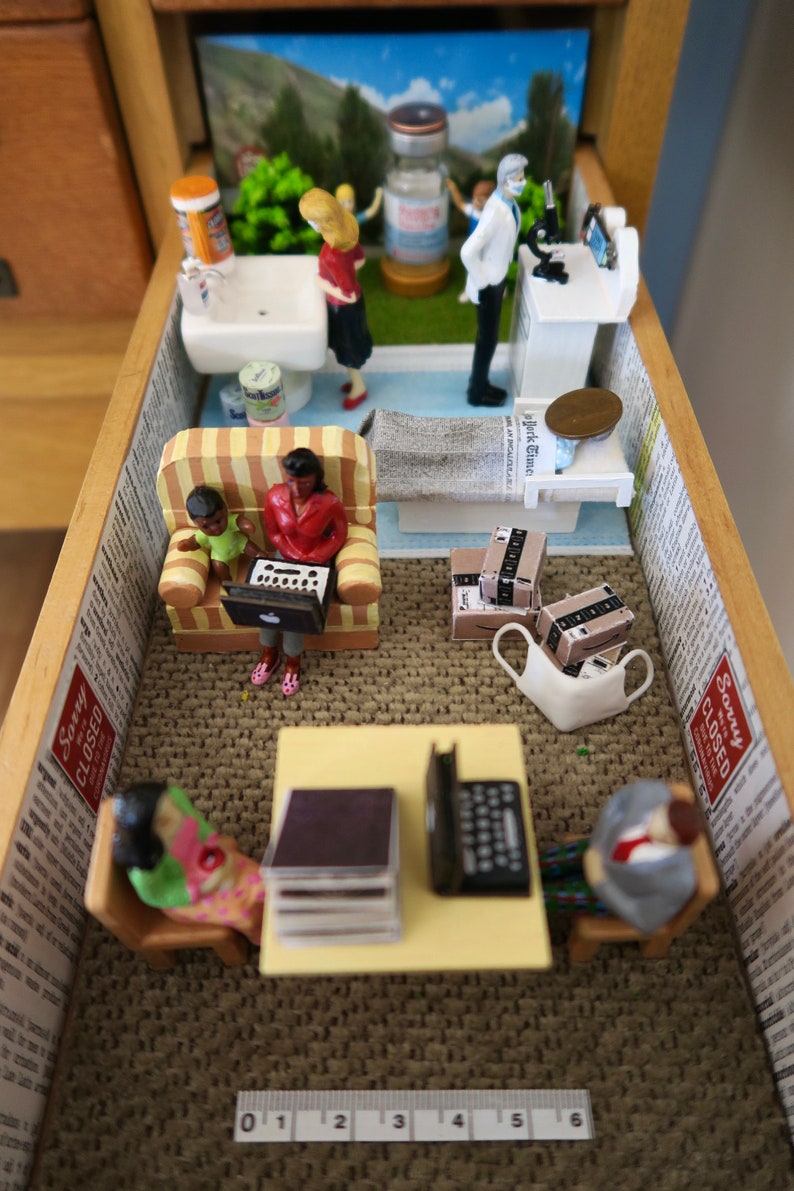https://www.etsy.com/listing/1283073189/museum-of-tiny-things-founding-member
Woman has created a Museum of Tiny Things inside her library card catalog.

https://www.etsy.com/listing/1283073189/museum-of-tiny-things-founding-member
Woman has created a Museum of Tiny Things inside her library card catalog.

Museum of Printing in Haverhill, MA has a section of typewriters.
Archive / online catalogue - Typewritermuseum<br /> accessed on 2025-09-22T15:36:11
American Art Collaborative. And this was a 2017 project to take 14 art museum collections together and use these sort of linked data principles that these things were built on to say, could you bridge across 14 institutions? Could you find connections? Could you provide a unified discovery environment for that many institutions at the same time? And what came out of that was a project that is called linked art. Rob Sanderson, who I'm sure many of you know, he's a regular here and a good colleague of mine. He and I worked together to create this data model called linked art based on the data model of the American Art Collaborative, which was the underlying sort of connective data tissue, building on years and years of work in the academic community under C-Dark to say, what if we had a tool that could bridge these things together?
Museums and Chill – The Role of Museums in Decolonisation
https://www.etsy.com/listing/1283073189/founding-member-level-membership-museum
Museum of Tiny Things, a museum of miniatures and scenes built into a repurposed library card catalog.



How to Report on the Repatriation of Native American Remains at Museums and Universities Near You<br /> by Ash Ngu, ProPublica
Does Your Local Museum or University Still Have Native American Remains?<br /> by Ash Ngu, Andrea Suozzo (ProPublica)
http://expositions.mundaneum.org/fr/mundaneum-petite-histoire-dune-grande-idee
Universal Bibliographical Directory (RBU)
that's just the story of how we transfer knowledge and how we preserve that knowledge and move it around and even when it's taken from us and we can find it 00:53:56 we go and we sing that song and we sing that spirit out of there and so this is what's important about transmission of knowledge for for us and so that knowledge they don't belong 00:54:09 to us
Uncle Ghillar Michael Anderson told a story of how his mob went into a museum and transferred the knowledge from sacred objects in the museum and then took the spirts out of there and moved them back in country. The curators didn't understand the process at all or how they had corrupted the sacred objects.
West, Theatres and Encyclopaedias, ch. 2; Garberson ‘Libraries, Memory and the Spaceof Knowledge’. For a multicultural introduction to the architectural imagery of early modern memory practices, seeSpence, The Memory Palace of Matteo Ricci.
It felt important to visit the Newseum 10 years ago, when every journalist I knew still believed great reporting would always win. Now, in the wake of its recent closure, the delusory nature of that kind of thinking doesn’t get any more obvious.
Very sad to see this closing. It was an amazing museum.
Ms. Berezin held nine computer-related patents. Her Data Secretary is on display at the Computer History Museum in Mountain View, Calif.
Definitely need to get to this museum!
Although the application was built for onsite audiences, the new system leverages web standards for accessibility and sustainability.
accessibility and sustainability as arguments for implementing on-site installations using web standard technology
To add to "More scholarship about CC licenses" and to support unit 4.1: Bishop, Carrie. “Creative Commons and Open Access Initiatives: How to Stay Sane and Influence People.” Art Libraries Journal 40.4 (2015): 8–12. Web.
Bishop presents a cheerful exploration of the Tate’s mammoth enterprise to digitize and release into the public Web 52,000 works of art, many of which are still under copyright. Commonly, galleries and museums would like to broaden exposure to the artwork in their collections, but when artists or their descendants are still actively monitoring use and income, there can be a barrier between connecting the public with the art work and the needs of the artistic community. Bishop describes the Tate’s desire to license the newly digitized images under a Creative Commons license to provide clear guidelines to the public, but at the same time to respond to the fears, hopes, and wishes of their artists. The Tate decided that it could best realize its goal to "democratize access" and to connect the public with British artists through applying the CC-BY-NC-ND license—both making the images available and quelling the concerns of the artists or their estate managing family members. The article provides an interesting perspective to the discussion of “open culture” or “free culture.” Some of this freedom may come about in incremental doses. The CC license might make it possible to allow an artist to connect their work with a larger public, at the same time that it makes them confident that their work won’t be misused or appropriated in an undesired manner. Aart museums seem to have a difficult relationship with open access and Creative Commons licensing. The Getty, for instance, has a fairly complicated statement of terms that make murky all that CC transparency, so there is viewing the material and then there is repurposing the material. The result is that a slow, measured pace, while nurturing the artist along, may be the way to ultimately make CC and Open Access a norm rather than an exception.
Like the art industry, art history has not done enough to diversify its student and faculty demography. Few students of colour earn the doctoral degrees now expected by most museums for entry-level curatorial positions.
How do we create piplines to encourage POC students to enter this profession? Eliminate internship and hiring practices that prohibit individuals with limited incomes from pursuing this career path!
2015 Andrew W. Mellon Foundation study which found that only four percent of curators in US museums are black
As VR creator Anna Henson—associate producer of Styles and Customs of the 2020s—explained in an email, “the museum is responsible for an interaction in which two people’s physical space will intersect. This is, in fact, a very intimate interaction.” Moments of intimacy range from introducing a visitor to VR by pantomiming how to put on the headset, asking for permission to tighten the strap against a visitor’s head, or being the first person a visitor sees when a session is cut short due to in nausea or dizziness. The museum took care to select and train gallery ambassadors who would be sensitive to visitors’ vulnerability. Henson also included a monitor that allowed bystanders to gain a glimpse into what their plugged-in companions were seeing, an effort to create a more inclusive and social experience.
I've found myself in several situations having to figure this out on the fly. It felt weird to have this big responsibility of introducing someone to their first VR experience - loosing their VRginity. I like Desi Gonzalez' positive tone here: as public institutions, Museums have a huge opportunity to shape visitors' (first) experiences with VR works. Likewise at festivals, where I must say I have been usually disappointed by the way (mostly volunteer) attendants guided my experience. This was usually due to providing too little context or introduction. Just asking if a visitor has ever done VR before - and providing guidance accordingly - can make all the difference.
Page 10
descriptions of Museum objects created for curatorial and research purposes are interesting to museum visitors.
Borgman on the intersection of popular Outreach / knowledge mobilisation and scholarship.
p. 5 argues that museums and botanical gardens are information systems.
n Saul Carliner’s LessonsLearned from Museum Exhibit Design, exhibit design is broken into three main stages(2003). The “idea generator,” “exhibit designer, and “idea implementer,”leads each phase respectively (Carliner, 2003). The idea generator determines the main concepts or themes and chooses the content of the exhibit. Then, the exhibit designer takes the concept to prepare physical designs for the new gallery, creating display cases and deciding wall and floor coverings for the overall ambiance. Lastly, the idea implementer brings together everything to create the exhibit. The implementer collects any missing pieces for the gallery, ensures conservation of displayed pieces, and oversees all parts of the assembly(Carliner, 2003)
Types of museum visitors outlined: idea generators, exhibit designers, idea implementers. Next paragraph introduces that an aspect of exhibit design missing is 'audience targeting' - reaching out to a specific clientele intentionally with an exhibition's design.
publisher or museum
Potential for LODLAM!
esta ficha, pero cualquier otra parte de la página mantiene una línea de baja interacción por parte del usuario: por ejemplo, al no poder subrayar alguna de las partes del texto, la funcionalidad de hypotesys queda reducida a referirse a algún concepto en particular. Claro, ha de pensarse que el cut and paste tiene contrapeso en propiedad intelectual solo qe también merma el potencial de hipervínculos para el aprovechamiento de la información de manera académica. Unas de cal .... En este caso quedan a debate las palabras referidas a "De esta manera los indígenas protegieron a la deidad de su destrucción"
El Instituto Nacional de Antropología e Historia de México está en pleno desarrollo de interfase de su pagina web. Una de las partes mas innovadoras es la que tiene que ver con la presentación de su catálogo en línea. Los metadatos distribuyen la información en 3 niveles:
grupo étnico época sala... que lectura es posible obtener de esa jerarquización (primera nota para mirar los alcances de la herramienta hypothesis)
The presence of volunteers further added to visitors’ experiences as volunteers’ presence encouraged visitors to ask questions, look for hints when appropriate, and learn about the mathematical principles behind the exhibits.
Value of volunteers / peers as POC's in the space. Works for dedicated galleries/museums, but not so sure for libraries. Spatial differences - people not coming to library as a "destination." Possibly helping text/hands-on technology and automated feedback channels more useful for our case.
inviting and amusing nature of the exhibition, designed to be interactive, entertaining, provocative, and challenging all at the same time
Challenging/less "popular" topics (i.e. math in this case) benefit from simpler exhibitions that still address the challenge, but make it interactive/entertaining
follow-up telephone interviews with visitors one month after each festival date in order to identify how visitors’ ideas about math change over time.
follow-up interviews to measure impact/changing perceptions over time